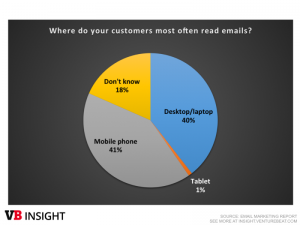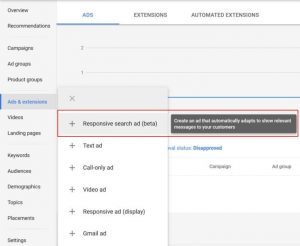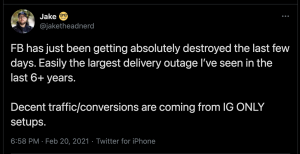Facebook’s latest measurement news explained using sports analogies.

On Wednesday, Facebook announced a wave of ad measurement news that even Facebook’s VP of measurement, Brad Smallwood, admitted were eyeball-glazing in their nitty-grittiness. But as boring or inside-baseball as they may seem, they’re important. So it’s important to explain them in a way that makes sense. To that end, I chose sports as an analogy.
Facebook is trying to give advertising’s sabermetricians — the Moneyballers of Madison Avenue — a better way to evaluate its ads against those from other channels, including TV, competing to make their media rosters.
Being able to measure Facebook against other media channels matters to advertisers in the same way that comparing players matters to teams’ general managers and coaches. Both entities are trying to evaluate whether the money they’re spending on platforms’ ads and players’ salaries are paying off and which platforms/players should get what share of the payroll (It may not always seem this way, but many advertisers work under some kind of salary cap). The announcements also matter to anyone keeping score of the shift in ad dollars from traditional platforms like TV to digital ones like Facebook, because that shift is more likely to take place if advertisers have a more like-for-like way of seeing what they’re gaining and giving up. Okay, now for the news.
Multi-channel scouting reports
News: Consumer packaged-goods (CPG) advertisers — big-money brands like Procter & Gamble, Unilever, Mondelēz and others — will now be able to see how their ads on Facebook and Instagram lead to people buying their products in brick-and-mortar stores in the same system they use to evaluate the sales impact of their TV, print and radio ads, specifically in Nielsen Catalina Solutions’ systems.
Sports analogy: This is like a team’s general manager looking at how many points each player — meaning platform like Facebook or TV — contributed in each game in order to rank their value and impact on the results that matter, i.e., wins and sales. And it’s a way to get advertisers to see how a rising star like Facebook stacks up against old legends, such as TV and radio.
Salary cap evaluations
News: Advertisers will be able to see their ads across Facebook, Instagram and Facebook’s Audience Network ad network included in the marketing mix modeling dashboards — from Nielsen, Neustar MarketShare, Analytics Partners and Marketing Evolution — that they use to evaluate where their ad dollars should go in the future based on past performance.
Sports analogy: After the season ends, GMs typically look at their rosters to decide which players they want to re-sign, which they want to trade, which they want to waive and which they might want to bring up from the minor leagues, based on how those players performed during the season. As it happens, many advertisers are currently in a similar period. They’ll be sitting down with their media agencies to look at their 2016 media investments and plan their 2017 ad budgets; these tools help them figure out where to re-up and where to cut.
Picking out the playmakers
News: Marketers using VisualIQ or Neustar MarketShare to analyze where their ad dollars are going and what they’re getting in return will be able to plug in data from Facebook’s Atlas ad server to get a more comprehensive map of how exposure to different ads in different places at different times combine to contribute to someone buying a product or doing something else the advertiser intended.
Sports analogy: Scorers get all the attention, but there’s a lot that leads up to a bucket: someone getting a steal, someone deciding to make the right pass instead of taking the wrong shoot, someone missing their shot but getting a rebound, then passing to the open player. Magic Johnson isn’t a Hall of Famer only because he made a lot of great shots; he also created a lot of great shots for others. Facebook wants to prove it’s a playmaker too.
Ad platform plus-minus
News: Oracle Data Cloud will link up to Facebook’s Lift API, so that CPG and retail advertisers can juxtapose one group of people who saw a brand’s ad on Facebook with a similar group of people who didn’t see the ad and compare the two on a like-for-like basis to see what kind of impact the ad’s exposure had on sales.
Sports analogy: A popular way of evaluating a player’s contribution to the team is to look at how his or her performance compares to his or her replacement’s. When LeBron James sits on the bench during a game, how many points do the Cleveland Cavaliers — or the team’s opponent — score compared to when he’s in the game? Does the team win as many games and by as many points when he doesn’t play as it does when he plays? How many minutes should LeBron play per game, and against which teams? How many ad dollars does Facebook deserve, and for which objectives and audiences?
Off-ball contributions
News: There’s typically one way of evaluating a mobile app install ad’s performance: Did the person who saw the ad click on it and install the app? But according to Facebook, 14 percent of the time that person may not have installed the app right then and there but eventually did, likely in part thanks to the ad they saw but didn’t click on. So now, mobile app advertisers will be able to track those looked-but-didn’t-touch instances — or “view-thru rates” — for their Facebook mobile app install ads through several mobile app analytics tools: Adjust, Adways Inc., AppsFlyer, Apsalar, CyberZ, Kochava and Localytics.
Sports analogy: A player’s value can extend beyond the box score. Pittsburgh Steelers wide receiver Antonio Brown may often turn in a 100-yard game or score four touchdowns, but just as often, he might draw a double-team that gets another receiver open for a touchdown. It’s another way to contribute to the team, even if it’s not necessarily what he’s getting paid for. And being able to measure that indirect contribution could help him out after a string of below-his-level games when the coach starts wondering whether to call his number as often. Of course, Smallwood wouldn’t say whether or not Facebook’s mobile app install ad business has experienced any softness recently that would explain why it would now need to make an indirect case for its ads’ value.
Marketing Land – Internet Marketing News, Strategies & Tips
(23)









